A standard 1957 nickel with “D” mint mark (Denver) or no mint mark (Philadelphia) is worth $0.25-$2 in good condition, but can exceed $100 in uncirculated state. Error coins command significantly higher premiums: the rare 1957-P quadruple die obverse has sold for over $400, while a high-grade 1957-P Proof 68 Ultra Cameo reached $7,000+. Other valuable errors include 1957-D no mint mark varieties, off-center strikes, and double dies. Important note: 1957 nickels contain no silver. Coin value depends on condition, rarity, and error presence, with pristine specimens and minting anomalies fetching premium prices among collectors.
That spare change rattling in your drawer could be hiding a treasure worth thousands of dollars. The 1957 Jefferson nickel might seem ordinary, but certain varieties and minting errors have sold for staggering amounts at auction. Whether you’ve inherited a coin collection or simply stumbled upon an old nickel, understanding what makes these 1957 specimens valuable could turn a five-cent piece into serious money.
Breaking Down the 1957 Nickel Standard Values
The 1957 Jefferson nickel came from two mints: Philadelphia (no mint mark) and Denver (D mint mark). Both facilities produced millions of these coins, but condition dramatically affects their worth today.
A circulated 1957 Philadelphia nickel in Good (G-4) condition typically sells for 25 to 50 cents. The same coin in Fine (F-12) condition might fetch 75 cents to one dollar. Once you reach About Uncirculated (AU-50), values climb to two to three dollars. The real jump happens with Mint State specimens. An MS-60 1957 nickel commands five to eight dollars, while an MS-65 specimen reaches 25 to 40 dollars in today’s market.
The Denver mint struck 1957-D nickels in similar quantities, creating comparable base values. Circulated examples range from 25 cents to one dollar depending on wear. Uncirculated specimens start around five dollars for MS-60 grade and climb to 35 to 50 dollars for MS-65 quality. Heritage Auctions recorded a 1957-D in MS-66 grade selling for 115 dollars in 2022, demonstrating how each grade increment substantially increases value.
Here’s the baseline pricing structure:
| Grade | Philadelphia (No Mint Mark) | Denver (D) |
|---|---|---|
| G-4 to F-12 | $0.25 – $1.00 | $0.25 – $1.00 |
| AU-50 | $2.00 – $3.00 | $2.00 – $3.50 |
| MS-60 | $5.00 – $8.00 | $5.00 – $8.00 |
| MS-65 | $25.00 – $40.00 | $35.00 – $50.00 |
| MS-66 | $75.00 – $125.00 | $90.00 – $150.00 |
These coins contain 75% copper and 25% nickel, giving them a melt value of approximately seven cents based on current metal prices. The numismatic value far exceeds metal content for collectible specimens.
The Proof Specimens That Command Premium Prices
Philadelphia struck special proof nickels in 1957 for collectors, creating coins with mirror-like surfaces and sharp details. These proofs were sold directly to collectors and never entered circulation, resulting in superior preservation compared to regular strikes.
A standard 1957 proof nickel in PR-65 condition sells for 15 to 25 dollars. The value escalates rapidly with higher grades. PR-67 specimens command 45 to 75 dollars, while PR-68 examples reach 150 to 300 dollars. The designation “Ultra Cameo” or “Deep Cameo” refers to proofs with exceptional contrast between frosted devices and mirror fields.
Stack’s Bowers Galleries documented a 1957 Proof-68 Ultra Cameo nickel selling for 7,344 dollars in January 2023. This extraordinary price reflects both the technical quality and the strong contrast that makes these coins visually striking. Only a handful of 1957 proofs have received this elite designation from major grading services like PCGS and NGC.
The U.S. Mint produced approximately 1,247,952 proof sets in 1957, each containing a nickel. Despite this mintage, truly exceptional survivors with full Deep Cameo contrast remain scarce. Most proofs show some degree of haze or contact marks from decades of storage, keeping them in lower proof grades where values remain modest.
Rare Minting Errors That Multiply Value Tenfold
Mint errors transform ordinary nickels into coveted rarities. The 1957 Jefferson nickel series contains several documented error types that collectors actively seek.
The 1957-P Quadruple Die Obverse represents the most valuable error from this year. This dramatic mistake occurred when the die received four separate impressions during the hubbing process, creating pronounced doubling of Jefferson’s profile, lettering, and date. The doubling appears strongest on “LIBERTY” and “IN GOD WE TRUST,” with each element showing distinct quadruple images.
A 1957-P Quadruple Die Obverse in PR-65 condition sold through Great Collections for 412 dollars in March 2023. Only a few dozen examples have been certified, making this error significantly rarer than typical doubled die varieties. Circulated examples in AU condition still command 150 to 250 dollars.
Off-center strikes happen when the planchet (blank coin) feeds improperly into the press. A 1957-D nickel struck 15% off-center with a full date visible sold for 87 dollars in 2022. More dramatic examples with 30 to 50% off-center strikes, especially those retaining the complete date and mint mark, can reach 200 to 400 dollars depending on eye appeal.
Repunched mint mark errors (RPM) occur when the mint mark punch strikes twice in slightly different positions. Several 1957-D RPM varieties exist, with the D showing doubling to the north, south, or east. While not extremely valuable, certified examples in MS-65 bring 25 to 60 dollars, roughly double the value of error-free specimens.
Wrong planchet errors occasionally surface when a nickel design strikes a dime planchet or vice versa. A genuine 1957 nickel struck on a silver dime planchet would be worth thousands, though documented examples are exceptionally rare. Be cautious of alterations and verify such coins through major grading services.
Identifying Genuine Philadelphia Versus Denver Strikes
Distinguishing between Philadelphia and Denver nickels matters because certain error varieties and values differ between mints. The mint mark location sits on the reverse (back) of the coin, to the right of Monticello’s dome.
Philadelphia coins from 1957 carry no mint mark at all. The area beside Monticello remains blank. Denver nickels display a clear “D” in this position. Examine this spot carefully with magnification, as worn coins sometimes develop scratches or post-mint damage that might resemble a faint mint mark.
Some collectors have reported finding what appears to be a 1957-D without the D mint mark, suggesting a “missing D” error. However, authentication proves critical here. Most alleged missing mint mark specimens actually came from Philadelphia and never had a D to begin with. Genuine filled die errors that obscure the D are possible but extremely rare.
When a die becomes clogged with grease or debris, it can fail to strike certain design elements properly. A true filled die error affecting only the mint mark would show weakness in that specific area while other nearby details remain sharp. Heritage Auctions authenticated a 1957-D filled die error obscuring the mint mark that sold for 276 dollars in MS-64 condition in 2021.
Compare the overall strike quality between your coin and confirmed examples. Denver nickels from 1957 sometimes show slightly different luster characteristics and strike sharpness compared to Philadelphia pieces, though these differences require experience to detect reliably.
Getting Your 1957 Nickel Professionally Graded
Raw coins (those not in professional holders) always sell for less than certified examples because buyers cannot verify the grade or authenticity independently. Third-party grading services like PCGS, NGC, and ANACS authenticate coins and assign standardized grades.
The grading process costs 20 to 50 dollars for standard service on modern coins, depending on turnaround time and declared value. This investment only makes sense for coins worth at least 75 to 100 dollars in raw condition. A common circulated 1957 nickel worth 50 cents shouldn’t be graded, but a potential Quadruple Die Obverse or high-grade mint state specimen definitely should.
Professional grading particularly matters for error coins where authenticity questions arise. Counterfeiters sometimes artificially create doubled dies or alter mint marks. Grading services employ experts who examine coins under microscopy and compare them against known genuine examples in reference collections.
Before submitting coins, examine them under 5x to 10x magnification in good lighting. Look for doubling on letters and dates, check the mint mark position, and assess overall sharpness. Compare your findings against images in error variety databases like Variety Vista or CONECA’s (Combined Organizations of Numismatic Error Collectors of America) reference materials.
Submit only coins that appear to have significant value potential. Group multiple coins in a single submission to reduce per-coin costs. Grading services offer bulk rates when you send five or more coins at once, dropping the individual cost to 15 to 30 dollars per coin depending on service level.
Maximizing Returns When Selling Your Discoveries
Once you’ve identified a valuable 1957 nickel, choosing the right sales venue impacts your final proceeds significantly. Several options exist, each with distinct advantages.
Online auction platforms like eBay reach millions of potential buyers, creating competition that drives prices upward for rare items. Certified high-grade examples and documented errors perform especially well here. Recent completed listings show 1957-D MS-66 nickels selling for 110 to 145 dollars, capturing strong prices through competitive bidding. Factor in eBay’s 12.9% final value fees and PayPal’s payment processing costs when calculating net proceeds.
Specialized numismatic auction houses like Heritage, Stack’s Bowers, and Great Collections cater to serious collectors with deep knowledge and substantial budgets. They’re ideal for exceptional specimens worth over 500 dollars. These firms charge seller fees ranging from 10 to 20%, but their expert cataloging and targeted marketing to qualified buyers often produces superior results. A 1957 Proof-68 Deep Cameo belongs in a major auction, not a local coin shop.
Direct sales to dealers provide immediate payment but lower prices. Dealers typically offer 60 to 80% of retail value since they need profit margin for eventual resale. This route works well for common date material or when you need quick cash rather than maximum value.
Coin shows let you interact directly with dealers and collectors, eliminating middleman fees. Bring your certified coins to regional or national shows where serious buyers congregate. The American Numismatic Association hosts several major shows annually where rare varieties attract appropriate attention.
Photograph your coins properly if selling online. Use indirect lighting to minimize glare, shoot against a neutral background, and capture both obverse and reverse in sharp focus. Include close-ups of the mint mark area, date, and any error features. Clear images build buyer confidence and justify premium pricing.
What Makes Some 1957 Nickels Worth Thousands
The dramatic value difference between a common 1957 nickel and rare specimens comes down to three factors: condition, errors, and proof designation. Understanding how these elements combine helps you recognize significant finds.
Condition matters most for common dates without errors. A worn 1957-D in Good condition contains the same metal and design as an MS-67 specimen, yet the latter commands 200 times more money. Collectors prize original mint luster, sharp strike details, and surfaces free from contact marks. Each point on the 70-point grading scale represents increasingly scarce survival rates in that condition.
The population reports published by PCGS and NGC reveal exactly how many coins they’ve certified at each grade level. For 1957 Philadelphia nickels, PCGS shows 89 coins graded MS-66, but only 12 graded MS-67, and just two at MS-67+. This scarcity pyramid explains why MS-67 examples bring 500 to 800 dollars while MS-66 specimens sell for 100 to 150 dollars.
Errors create instant rarity regardless of mintage numbers. While Philadelphia struck over 38 million nickels in 1957, fewer than 100 Quadruple Die Obverse examples have been certified. This error didn’t affect every coin; it resulted from a specific damaged die that struck a limited number of pieces before removal from service. Similar scarcity applies to dramatic off-center strikes and wrong planchet errors.
Proof designation separates deliberately made collector coins from circulation strikes. The special production process and immediate collector preservation means proofs typically survive in superior condition. When exceptional technical quality combines with the rare Deep Cameo contrast designation, you get coins like the 7,000-dollar Proof-68 specimen that represents the finest known examples.
Preserving Value Through Proper Storage
Once you’ve identified a valuable 1957 nickel, proper storage prevents damage that could cost hundreds or thousands of dollars in lost value. Even minor mishandling can create problems that lower grades.
Never clean coins with any method whatsoever. Collectors and grading services value original surfaces, including natural toning. Cleaning with polish, baking soda, or even gentle cloths creates microscopic scratches that are visible under magnification. A cleaned MS-65 nickel might grade only AU-55 after amateur cleaning, dropping from 35 dollars to three dollars in value.
Store valuable nickels in inert holders made from Mylar or other archival materials. Avoid PVC-containing plastic flips, which leak chemicals that create greenish corrosion over time. Coin supply companies sell non-PVC holders for 10 to 25 cents each, a worthwhile investment for any coin worth over 10 dollars.
Handle coins by their edges only, never touching the obverse or reverse surfaces. Skin oils contain acids and salts that create fingerprints and corrosion spots. Wear cotton gloves when examining valuable specimens, and work over a soft cloth surface to prevent damage if you accidentally drop a coin.
Climate control matters for long-term preservation. Store coins in areas with stable temperature and humidity, avoiding attics, basements, and other spaces with wide environmental fluctuations. Silica gel packets in storage boxes help control moisture, preventing the development of spots and toning issues.
For coins still in original mint packaging or proof sets, leave them undisturbed. Opening original packaging to examine individual coins might satisfy curiosity but destroys collectible value associated with complete sets in factory-sealed condition.
Your Next Steps Toward Discovering Hidden Value
Start by checking any 1957 nickels against the information provided here, focusing first on mint marks and overall condition. Use a jeweler’s loupe or magnifying glass to examine lettering for doubling and inspect surfaces for the sharp details that indicate higher grades.
Research current market prices through completed auction listings on platforms like eBay and Heritage Auctions. These real transactions show what collectors actually pay, not theoretical book values. Track multiple sales of similar coins to establish reliable price ranges.
Connect with local coin clubs where experienced collectors can examine your finds and offer opinions. Most cities have numismatic organizations that meet monthly, welcoming beginners and providing educational resources. The American Numismatic Association’s website lists affiliated clubs by region.
Consider submitting potentially valuable specimens for professional grading, but only after careful research suggests the coin’s value exceeds submission costs by a comfortable margin. Start with online pre-grading opinions from dealer forums before committing to paid services.
That ordinary-looking 1957 nickel might be your ticket to unexpected profit, but only if you know what to look for and how to verify it properly. Take the time to examine your coins carefully, research thoroughly, and seek expert authentication when values justify the investment.
You may be interested:
- 1859 Indian Head Penny Coin Value Complete Errors List And No Mint Mark Worth Guide For Collectors
- 1911 V Nickel Coin Value Guide Complete Errors List And No Mint Mark Worth Today
- 1902 Dime Coin Value Complete Errors List With O S And No Mint Mark Worth Guide
- 1788 Quarter Coin Value Complete Guide Errors List And D S P Mint Mark Worth Revealed
- 1776 To 1976 Bicentennial Half Dollar Coin Value Complete Errors List And What Your D S And No Mint Mark Coins Are Actually Worth
- 1990 Penny Coin Value Errors List How D S And No Mint Mark Pennies Are Worth Thousands Of Dollars

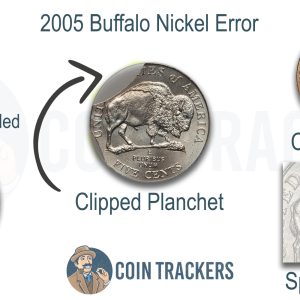
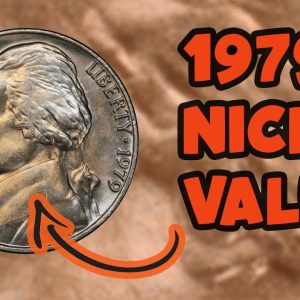
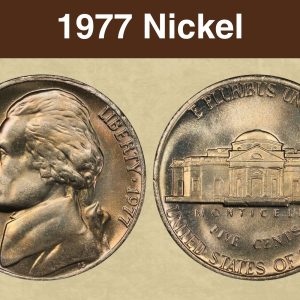
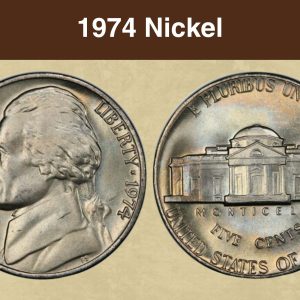
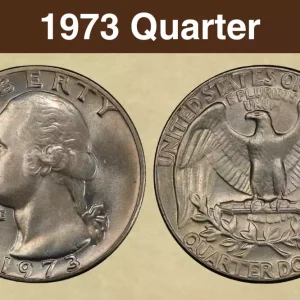
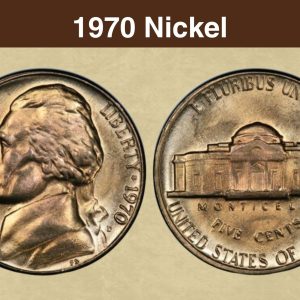
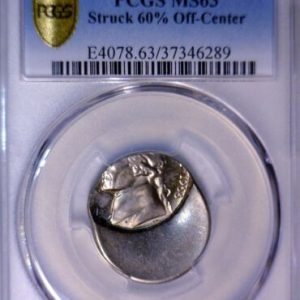
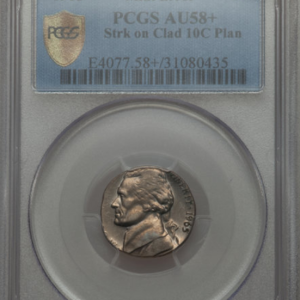
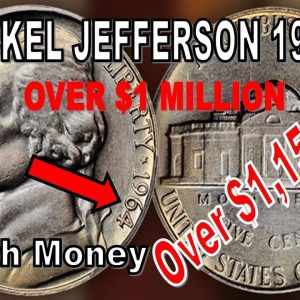
What are the errors on a 1957 nickel?
Errors on a 1957 nickel include off-metal strikes (like being struck on a cent planchet), doubled dies on both the obverse (front) and reverse (back), mint mark errors (like a “D” over an “S” on the 1957-D), and planchet and striking errors such as missing letters on the reverse and misaligned strikes.
What nickel error to look for?
Key nickel errors to look for include doubled dies, where design elements are doubled due to die strikes, off-center strikes, where the coin is struck outside its intended position, and mint mark errors, such as doubled or missing mint marks. Other valuable errors are speared bison on 2005 nickels, the 1943 double die Jefferson nickel, and 1937-D Buffalo nickel three legs.
What makes a 1957 nickel valuable?
So it does have a very good grade the grading scale goes up to 70 this is at a 67. And this coin sold for over $400. Now here is a 1957 proof that is graded at a proof 68 ultra cameo.
What makes a 1957 coin valuable?
Coins minted in 1957 are sought after especially if they possess rare minting errors, which serve as focal points for collectors who treasure these unique anomalies.